PRINCETON, NJ -- Barack Obama's lead over John McCain in Gallup Poll Daily tracking of national registered voters fell from an average of 6 percentage points for the week of July 21-27 (47% vs. 41%) to an average of just 1 point from July 28 to Aug. 3 (45% vs. 44%).
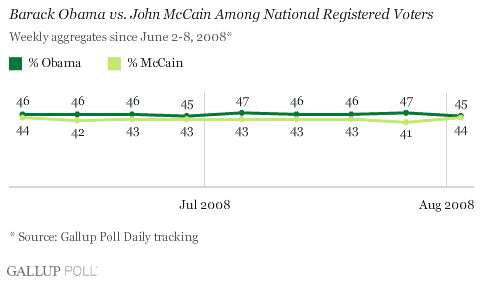
Obama's slightly elevated support from July 21-27 (a time period coincident with his well-publicized overseas tour) included his widest three-day rolling average lead over McCain to date: a 9 percentage-point lead in Gallup Poll Daily tracking conducted July 24-26, 49% to 40%.
Voter preferences on an average weekly basis have been highly stable since early June. However, with more than 6,000 registered voters behind each set of weekly numbers, the contraction of the race between the last two full weekly aggregates is statistically significant. More recently, Gallup Poll Daily tracking reports from Aug. 4 through Aug. 6 have tended to show Obama with a slight lead.
The aggregated data set for July 21-27 showed Obama enjoying slightly higher than usual levels of support from women, Hispanics, the non-college-educated, and conservative Democrats. But in the most recent weekly aggregate, from July 28-Aug. 3, Obama's support levels from these groups have reverted to what can be considered the norm.
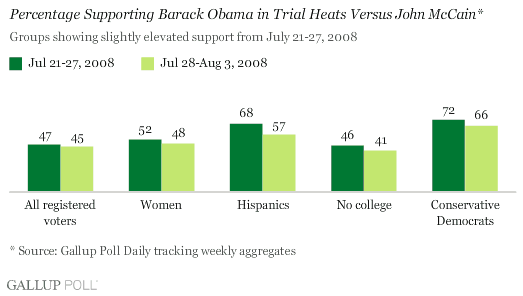
Still, throughout both periods, Obama maintained broad levels of support among his standard core constituency groups: Democrats, liberals, moderates, women, 18- to 29-year-olds, blacks, Hispanics, those with no religious affiliation, and postgrads. He holds solid leads over McCain among all of these groups in Gallup tracking from July 28-Aug. 3.
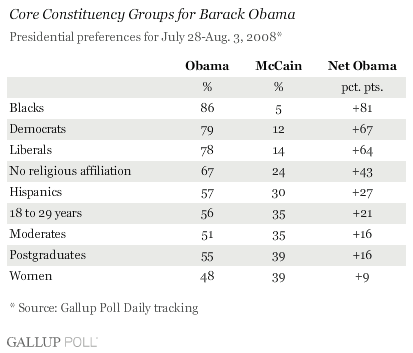
In contrast to these electoral advantages for Obama, McCain does reliably well among men, seniors, whites, conservatives, Protestants, and, of course, Republicans.
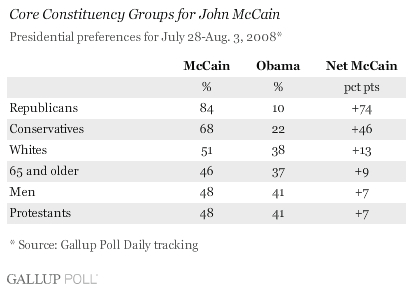
Major subgroups of the U.S. population giving neither candidate a large or consistent edge include 30- to 49-year-olds, 50- to 64-year-olds, college grads, those with some college education, those with no college education, political independents, and Catholics.
The weekly trends in the candidate preferences of these "swing" groups since June show just how close the race is among these groups. Perhaps most important is the tight nature of the race among independents.
Also of note, Obama held a slight edge among Catholics in mid- to late July, but those gains were erased in tracking from July 28 to Aug. 3. The aggregated weekly data for the other swing groups show no clear shifts over time in favor of either Obama or McCain.
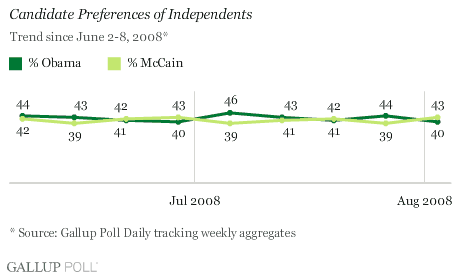
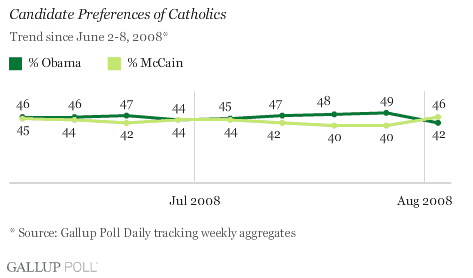
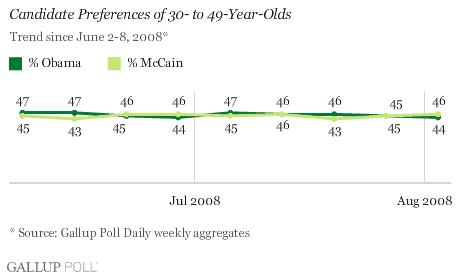
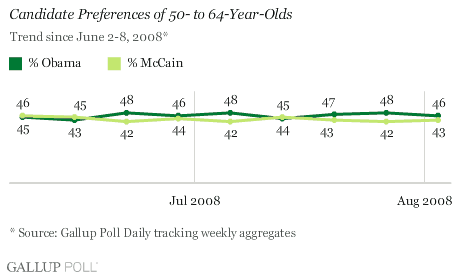
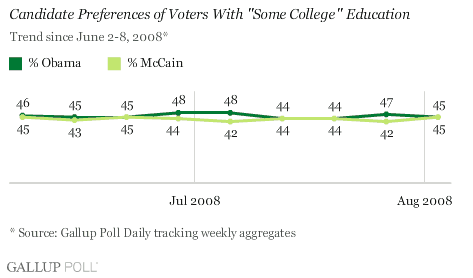
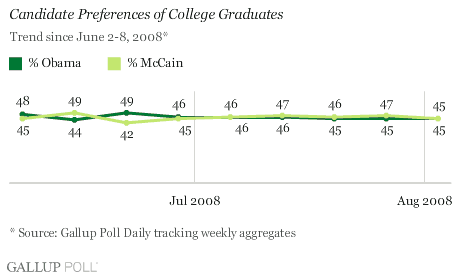
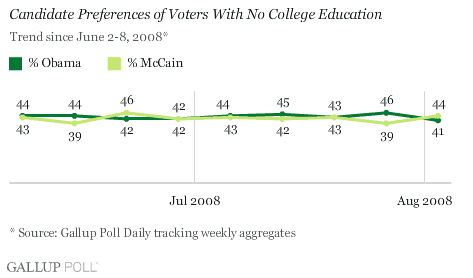
Implications
In terms of building a winning coalition this November, McCain and Obama each start with nearly universal support from their political bases in the Republican and Democratic Parties. Initial Republican concerns that McCain would have difficulty holding conservatives have not panned out, nor have fears that Hillary Clinton's supporters would defect from the party in droves should Obama be nominated.
This seems to focus the contest primarily on political independents, territory long known to be a McCain strength, but also fertile for Obama with his strong appeal to young, generally independent, voters. Gallup's weekly aggregate trends document how close the election has been, and remains, among the politically unanchored middle, as well as among certain age, educational, and religious subgroups. If the race starts to change, it will most likely do so in these places.
Survey Methods
For the Gallup Poll Daily tracking survey, Gallup interviews no fewer than 1,000 U.S. adults nationwide each day, generally including approximately 880 registered voters. The average weekly results reported here are based on combined data from approximately 6,200 registered voters interviewed each week from Monday through Sunday.
For results based on samples of this size, the maximum margin of sampling error is ±1 percentage point. For results based on subgroups of registered voters, the margins of sampling error are higher.
Interviews are conducted with respondents on land-line telephones (for respondents with a land-line telephone) and cellular phones (for respondents who are cell-phone only).
In addition to sampling error, question wording and practical difficulties in conducting surveys can introduce error or bias into the findings of public opinion polls.
To provide feedback or suggestions about how to improve Gallup.com, please e-mail feedback@gallup.com.
